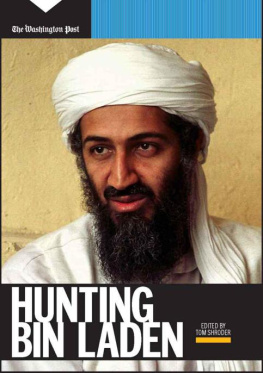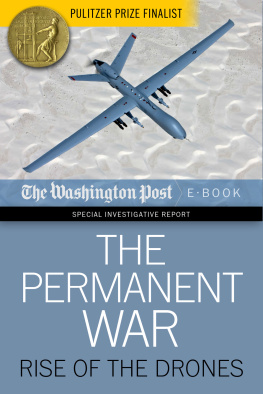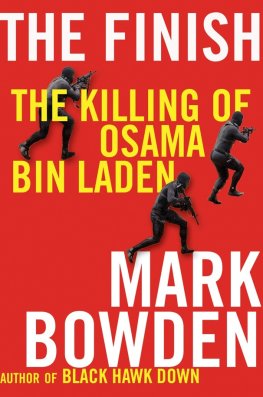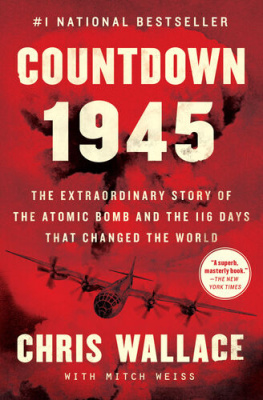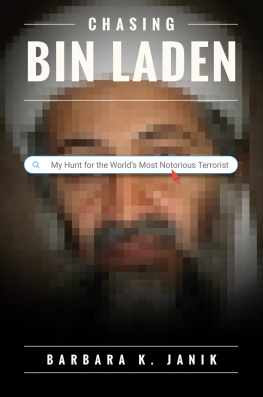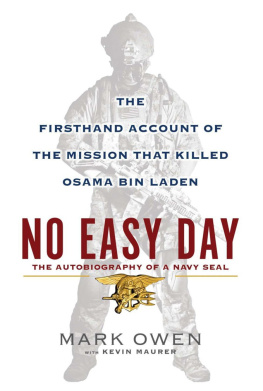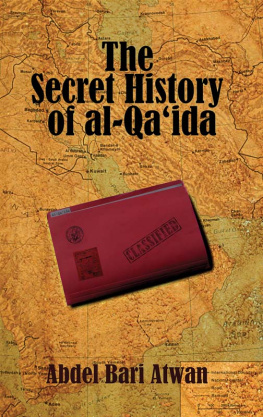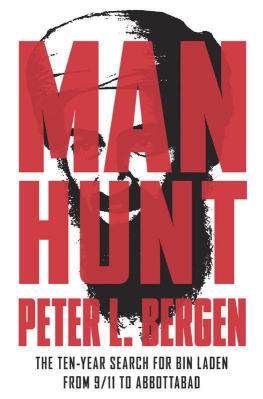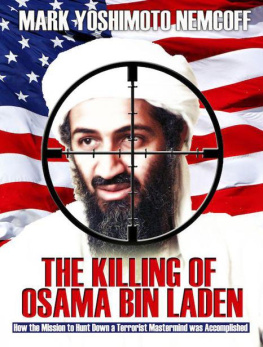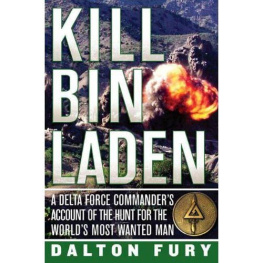The Hunt for Bin Laden
Introduction
The long, secret campaign to track down Osama bin Laden has been called the biggest, costliest manhunt in history. It began in 1997 during the Clinton administration, when bin Laden was known as a jihadi money man, not a terrorist mastermind. As bin Laden issued increasingly explicit threats against the West, and America in particular, field CIA agents became convinced bin Laden posed a clear and present danger to the homeland. Time and again they had bin Laden in their cross-hairs only to have missions cancelled at the last moment by superiors in Langley and the White House.
As four hijacked commercial jets streaked toward their targets in New York and Washington, bin Laden was living comfortably in Afghanistan, trying to get a satellite signal to watch his handiwork on live TV. That evening, he toasted the collapsed towers at a collegial dinner, expressing pleasant surprise that the attack had killed so many. Then he went on the lam, touring strongholds of support in Afghanistans outback and making speeches. As the U.S. bombing campaign in Afghanistan began in earnest, bin Laden retreated to a complex of caves and tunnels dug into a mountainous region called Tora Bora. The CIA team hunting him had a solid fix on him there and concentrated huge blockbuster bombs on his location. But he escaped once more, and soon the war in Iraq drained the resources and diverted the spotlight from the hunt, turning the mission to kill or capture bin Laden into a back-burner operation and political liability for the Bush administration.
The hunt continued in the background for years without any solid leads as to where bin Laden had gone. The best guess put him in the almost lawless tribal regions on the border of Pakistan and Afghanistan, but the best guesses were wrong. As the treacherous attacks of 9/11 drifted almost a decade into the past, increasingly punishing drone attacks, interrogations of captured al Qaeda operatives and an ever expanding network of informants finally began to yield a trail, pebble by pebble.
It wasnt until the Iraq war began to wind down that the search gained its endgame momentum, reclassified as a highest priority again by a new president. The breakthrough came when bin Ladens shadowy courier was finally identified, and his cell phone intercepted. Wire intercepts and surveillance eventually led the CIA directly to a mysterious million-dollar compound in Abbottabad, Pakistan. After fourteen years, two wars and billions of dollars spent in the effort, a team of Navy Seals finally brought the hunt to a swift and conclusive end.
This is a reconstruction of the hunt culled from reporting by more than two dozen Washington Post correspondents and staffers over more than 15 years.
From stories by: John Ward Anderson, Peter Baker, Karin Brulliard, Steve Coll, Karen DeYoung, Michael Dobbs, Peter Finn, Marc Fisher, Bradley Graham, Anne E. Kornblut, John Lancaster, Richard Leiby, Vernon Loeb, Jerry Markon, Greg Miller, Molly Moore, Dana Priest, Ian Shapira, Ann Scott Tyson, Joby Warrick, Craig Whitlock, Scott Wilson and Bob Woodward.
Contributors: William Branigin, Pamela Constable, Susan B. Glasser, John Lancaster, Allan Lengel, Colum Lynch, Ellen Nakashima, Walter Pincus, John Pomfret, Keith B. Richburg, Thomas E. Ricks, Paul Schwartzman, Robert E. Thomason, Josh White, Griff Witte and Kevin Sullivan; staff researcher Julie Tate; and special correspondents Haq Nawaz Khan and Kamran Khan.
Edited by Tom Shroder
One Manhunt Creates a Bigger One
The seeds of the CIAs first formal plan to capture or kill Osama bin Laden were contained in another urgent manhunt for Mir Aimal Kasi, the Pakistani migrant who murdered two CIA employees while spraying rounds from an assault rifle at cars idling before the entrance to the agencys Langley headquarters in 1993.
For several years after the shooting, Kasi remained a fugitive in the border areas straddling Afghanistan, Pakistan and Iran. From its Langley offices, the CIAs Counterterrorist Center asked the Islamabad station for help recruiting agents who might be able to track Kasi down. Case officers signed up a group of Afghan tribal fighters who had worked for the CIA during the 1980s guerrilla war against Soviet occupying forces in Afghanistan.
The family-based team of paid agents, given the cryptonym FD/TRODPINT, set up residences around the city of Kandahar. They were rugged, bearded fighters often in teams of a dozen or so who rolled around southern Afghanistan in four-wheel-drive vehicles, blending comfortably into the regions militarized tribal society.
When the TRODPINT team set out to find Kasi, one or two senior family members handled the face-to-face contacts with the CIA. Case officers working from the U.S. Embassy in Islamabad supplied them with cash, assault rifles, land mines, motorcycles, trucks, listening devices and secure communications equipment.
Together they concocted a bold plan to capture Kasi and fly him to the United States for trial. If the Afghan agents found Kasi, they would detain him until U.S. Special Forces secretly flew into Afghanistan to bundle the fugitive away. With the TRODPINT team acting as spotters, the CIA identified a desert landing strip near Kandahar that could be used for a clandestine American extraction flight. The White House approved the plan, and President Bill Clinton secretly dispatched a Special Forces team to southern Afghanistan to confirm the coordinates and suitability of the makeshift airstrip.
In the end, Kasi was found elsewhere. In late May 1997, an ethnic Baluch man walked into the U.S. Consulate in Karachi, Pakistan, and told a clerk that he had information about Kasi. He was taken to a young CIA officer, who was chief of base in the city. The informant handed her an application for a Pakistani drivers license Kasi had filled out under an alias. It contained a photo and a thumbprint that confirmed Kasis identity.
Three weeks later, a team of CIA officers, Pakistani intelligence officers and FBI agents arrested Kasi at a hotel in Pakistan, flew him to the United States and jailed him for trial. (He was convicted of murder in 1997, sentenced to death in 1998 and executed in Virginia on Nov. 14, 2002.)
In the weeks that followed Kasis arrest, a new question was raised inside the CIAs Counterterrorist Center: What would become of their elaborately equipped and financed TRODPINT assets? The agents had filed numerous reports about where Kasi might be, but none had panned out. Ultimately, the team played no direct role in Kasis arrest. Despite this questionable record, it seemed a shame to just cut them loose, some Langley officers believed.
At CIA headquarters, the unit set up to track Kasi was located in the Counterterrorist Center. A few partitions away was another small cluster of analysts and operators who made up what the CIA officially called the bin Laden issue unit.
The unit had been created early in 1996 to watch a troublesome supporter of radical Islamic jihad named Osama bin Laden, who was then living in Sudan.
The Beginnings of Bin Laden
Osama bin Ladens father, Mohammed bin Laden, emigrated as a youth from the Hadramawt region of Yemen, arriving as a penniless laborer in 1925 in what would become the kingdom of Saudi Arabia. Energetic and engaging, Mohammed bin Laden had a knack for engineering and found his way into the construction business.
By the late 1930s, he had established his own firm and was working on palaces for the royal family. In time, he became a favored contractor for the huge projects the kingdom undertook with its ever-growing oil riches.
He had already taken multiple wives and had more than a dozen children when, in 1956, he married 14-year-old Alia al-Ghanem, who came from a Syrian family of citrus farmers. In 1957, Alia gave birth to a son, Osama, which means young lion in Arabic.
Next page
